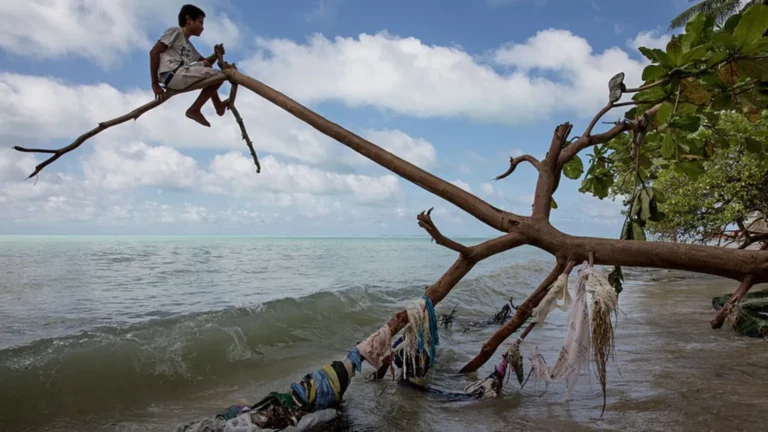Stephen Hawking’s struggle with wheelchair inaccessibility at the Taj Mahal in 2001 remains a potent symbol of India’s persistent failure to foster disability (purple) inclusion in tourism sector. Despite being ranked 22nd among the globe’s most frequented nations and home to 43 UNESCO World Heritage Sites, India remains inaccessible to 16% of the world’s population and 2.21% of its citizens living with disability(ies). The paucity of data on travel patterns of persons with disabilities (PwDs) spotlight the systemic neglect that compels many to forgo travel due to inadequate infrastructure.
The Accessibility Conundrum in Indian Tourism
Accessible tourism transcends mere convenience, embodying equality and inclusivity. Accessibility must address a spectrum of needs, from signboards to trained staff. So, a myopic emphasis on wheelchairs and ramps would render the discourse insipidly simplistic. Failure to ensure accessibility and reasonable accommodations for PwDs starkly contravenes India’s obligations under the United Nations Convention on Rights of Persons with Disabilities (UNCRPD). The UNCRPD Committee clarified that while accessibility standards establish ex-ante duty, reasonable recommendations require ex-nunc adjustments to meet specific and individual needs. Efforts must align with the United Nations World Tourism Organisation’s Recommendations on Accessible Tourism for All (2013), Accessible Information in Tourism, the Global Code of Ethics for Tourism, and the UN Tourism & San Marino Action Agenda.
India’s Path to Inclusive Tourism
The Accessible India Campaign 2015 (AIC), grounded in Universal Design and Reasonable Accommodation, aspires to render a built environment, transport infrastructure, and information resources accessible to all. The Rights of Persons with Disabilities Act 2016 (RPDA) normatively recognises the significance of accessibility through Sections 40 to 46. The Rights of Persons with Disabilities (RPD) Rules, 2017, under Chapter VI, Rule 15, mandates compliance with specified accessibility standards across establishments. Harmonised Guidelines and Space Standards for Barrier-Free Built Environment for Persons with Disabilities and Elderly Persons (HG) of 2016 and HG 2021, along with the Accessible Tourism Guidelines and the Culture Sector Specific Guidelines of 2023, aspire to universal accessibility. Sector-specific initiatives such as the ‘Swadesh Darshan Scheme‘, ‘Prashad Scheme and ‘Adopt a Heritage Project‘ are commendable but require robust implementation.
Accessibility: Mandate or Voluntary adherence?
India’s emergence as a regional vanguard in accessibility is noteworthy; however, in the spirit of progress, it must further its efforts in inclusivity systematically and incrementally. As it stands, Sections 44, 45, and 46 in the RPDA establish a firm mandate for accessibility standards to ensure equal access for PwDs. Initially, Rule 15 of the ‘Rules for Accessibility’ upheld these mandates. However, introducing the HG 2016 and the subsequent HG 2021 marks a departure from this obligatory framework. These guidelines, though instructive, lack legal enforceability, thus transforming the compulsory accessibility provisions into a regime of voluntary adherence. This shift dilutes the RPDA’s intent and alignment with the UNCRPD, which advocates for the immediate and progressive realisation of accessibility rights as hybrid rights. The UNCRPD Committee, in its 2019 Concluding Observations, has also criticised the sluggish progress in accessibility and recommended a cross-sectoral approach within the AIC.
Transport and Digital Inclusivity: Forgotten Frontiers
Concerningly, inclusion in transport systems remains embryonic in India. As of September 2021, efforts are underway to ensure all 35 international and 55 out of 69 domestic airports adhere to the Accessibility Standards and Guidelines for Civil Aviation. The fact that a mere 8.3% of buses are fully accessible and 30% offer partial accessibility for PwDs demonstrates a systemic failure to prioritise accessibility. As many as 597 railway stations have been equipped with either escalators or lifts to enhance accessibility. However, only 709 railway stations are fully accessible, and 50% provide only partial access. This shortfall limits mobility and excludes PwDs from fully participating in tourism.
The digital divide further marginalises PwDs. The Indian Tourism websites’ accessibility and usability for the visually impaired miss the mark on Web Content Accessibility Guidelines (WCAG) 2.0 guidelines. Deficiencies include imperceptible information, non-operable interfaces, incomprehensive content and inadequate adaptability to technological evolution. Airline and travel websites flout the accessibility criteria set forth by the Directorate General of Civil Aviation Regulations 2014. Following these lapses, the Department of Empowerment of Persons with Disabilities (DEPwD) has overhauled ‘Rule 15- Rules for Accessibility’ for ICT Products and Services, mandating compliance with the ISO 17802 standard.
Budgetary Blindspot
Insufficient fiscal allocations belie India’s ostensible commitment to accessibility, and the recent budgetary trends further undermine India’s credibility. A precipitous decline of 37.5% in funding for the implementation of RPDA highlights a broader neglect of disability rights. The budget for 2024-25 earmarks a paltry 0.025% of the total budget for the DEPwD, which is starkly incongruent with India’s professed priorities of inclusive development. This financial apathy hampers the progress of policy initiatives such as the AIC, eroding the trust in the system’s ability to uphold the rights of PwDs.
From Rhetoric to Reality
The economic potential of accessible tourism is undeniable, with global revenues projected to reach EUR 88.6 billion by 2025. Kerala’s trailblazing ‘Barrier-Free Kerala Tourism’ initiative, an accessible Marina Beach, the Anubhav Gallery of Delhi’s National Museum and the Museum of Art and Photography in Bangalore exemplify promising strides. The judiciary has also consistently served as a bulwark against the systemic exclusion of PwDs from public life. Landmark rulings, such as the Rajiv Raturi case, mandated universal accessibility of public spaces. Specifically, Indian Courts have also directed making all tourist spots and beaches accessible.
India stands at crossroads: Is AIC just a pipe dream, or will it transform its lofty promises into reality? That hinges on translating normative commitments to concrete actions, upholding legal imperatives unflinchingly, and shunning any dilution of ‘mandatory compliance’ into a mere ‘voluntary adherence.’ Sector-specific accessibility standards, rigorous oversight and sustained investments can only uphold India’s commitment to accessible tourism. Further, disability and non-disability are not water-tight compartments but rather exist on a continuum. With an estimate of more than 3.5 billion requiring an assistive product by 2050, accessible tourism is a whole-of-life approach to tourism, benefitting all in the long run.
Author
Swarna Latha R is a Doctoral Candidate at the Faculty of Legal Studies, South Asian University, New Delhi.





